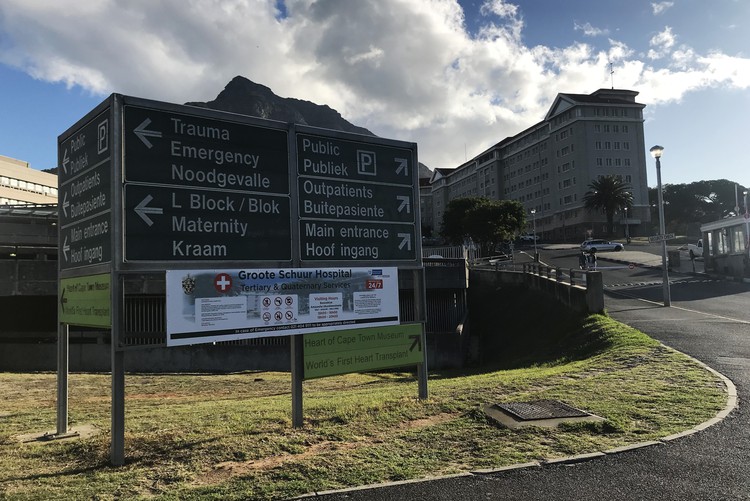How the Western Cape is responding to Covid-19
We had an advantage over countries in the North “because we had the opportunity to observe them, the trajectory of their epidemic, their mistakes”
The Western Cape Department of Health has been making a considerable effort to respond to the Covid-19 threat, both with the preparations by public hospitals and with community screening and testing responses.
The province has 9,860 public and 5,030 private hospital beds, which translates to about a bed for every 460 people. But they are also needed for illnesses other than Covid-19. The province has therefore planned on the basis that it will need 1,580 of these beds for the pandemic.
“Our current planning incorporates available beds in both public and private sectors. We still expect a shortfall, and are planning some additional temporary space,” said provincial health spokesperson Mark Van der Heever. He also said that temporary isolation facilities are currently being identified.
According to Van der Heever, there are currently seven public hospitals dedicated for screening and testing in the Western Cape (which the province calls Testing and Triage Centres): Groote Schuur, Tygerberg, New Somerset, Victoria, Paarl, Mitchells Plain, and Khayelitsha.
“Tygerberg and Groote Schuur are fully operational while the others are in various stages of operationalisation, soon to be put into full operation,” said Van der Heever.
He explained that the protocol in hospitals is to separate the Covid-19 services from the “normal flow of hospital patients” to prevent infections.
Patients who are suspected of being infected with the coronavirus are either admitted to an isolation or intensive care ward, where they will also be tested for the virus. This is the case for both public and private hospitals, which follows the guidelines set out by the National Institute for Communicable Diseases (NICD).
Van der Heever also said that there are plans to establish additional triage and testing sites in the province.
Testing and screening in the province
On 6 April, the department launched a door-to-door screening and testing initiative in communities that are vulnerable or at high risk.
Dr Neal David, a family physician, is helping the department coordinate the program. He said that the biggest challenge during the screening process is matching it with their testing capacity (there’s more capacity to screen than test).
In the screening process community health workers ask people questions about possible Covid-19 symptoms to identify whether they require further testing.
“We’re looking for patients with new-onset respiratory symptoms. And at this time of year, that would describe a lot of people with or without Covid-19,” said David.
He said that the province’s first aim was to identify “hotspot areas”, which includes areas that have a high vulnerability index or areas that have had diagnosed cases of Covid-19.
“We want to assume that the worst is coming. So that we can prepare for it,” said David. He also said that while our healthcare system can become easily overwhelmed, the “attack rate” (people infected with the coronavirus who have become very ill) in South Africa has so far remained quite low.
Inside public hospitals
An infectious disease physician working in a Western Cape public hospital, who asked to remain anonymous, said that public hospitals in the province have had an “excellent response” to the Covid-19 threat.
“South Africa in general had a major advantage over other countries in the North, because we had the opportunity to observe them, the trajectory of their epidemic, their mistakes, and we had time before the virus was introduced here,” he said.
He said that an important lesson learnt from other countries is that healthcare centres are critical settings where Covid-19 is transmitted. This has allowed public hospitals to prepare their staff and patients for physical distancing.
He said the “stated objective” of the strategy is to slow down the transmission of Covid-19 so that hospitals don’t get overwhelmed. This includes putting systems in place that separate coronavirus patients from those that don’t have the infection, as well as creating physical space within the hospital and between staff.
“We’ve learnt that very early on you have to implement strict infection control measures for staff. Healthcare centres are a really important place where Covid-19 gets transmitted. It infects the healthcare workers, but it also infects the patients, and gets taken back into a community,” he said.
The doctor said that smaller public hospitals across the country may have limited space and resources to tackle an increase in hospital admissions.
“We either need additional staff, which I don’t know where we’re going to get it from, or we need additional and temporary space. [Small public hospitals] are seriously constrained by their lack of physical infrastructure,” he said.
Care homes
Many elderly care facilities, such as the Cape Peninsula Organisation for the Aged (CPOA) and Highlands House, have implemented strict lockdown measures already a week before the rest of the country’s lockdown, according to Leon Geffen*, the head of the Samson Institute for Ageing Research, who has been engaging with several nursing homes.
Geffen said that staff are being screened and visitors are prevented from entering the facilities. “It has meant enormous changes to the way they operate. It has affected the daily lives of the residents, since they cannot go out as they used to. But it is with the intent to keep everyone safe,” he said.
CORRECTION: The article originally stated there is more capacity to test than screen. Obviously it’s the other way round.
Full disclosure: Dr Leon Geffen is the brother of GroundUp editor Nathan Geffen.
Next: Covid-19: Global experts suggest plan for informal settlements
Previous: Covid-19: Lawyers urge justice minister to re-open more courts
© 2020 GroundUp.
This article is licensed under a Creative Commons Attribution-NoDerivatives 4.0 International License.
You may republish this article, so long as you credit the authors and GroundUp, and do not change the text. Please include a link back to the original article.



